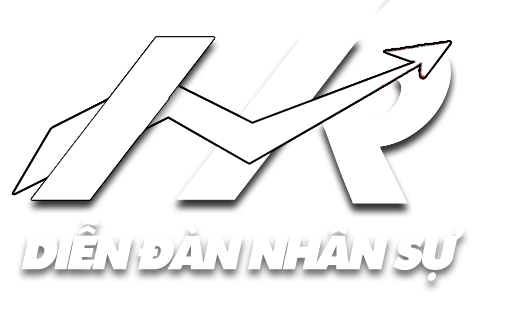sophiagrace33
New member
- Bài viết
- 23
- Lượt thích
- 0
The anti-plagiarism software market size has undergone significant transformation over the years, particularly in its role in the education sector. According to a new report by Expert Market Research, the global anti-plagiarism market for the education sector is projected to expand at a CAGR of 12.5% between 2024 and 2032, reflecting the growing emphasis on academic integrity and the proliferation of digital learning tools. This growth trajectory is backed by the rising adoption of technology in educational institutions and the urgent need to uphold the principles of academic honesty in a rapidly evolving academic environment.
Market Drivers
The growth of anti-plagiarism solutions in education is underpinned by various factors:
The anti-plagiarism market is segmented into deployment, end user, format, and region:
Key players are continuously innovating to capture a larger market share. Some notable companies include:
Market Drivers
The growth of anti-plagiarism solutions in education is underpinned by various factors:
- Rising Academic Integrity Awareness: Educational institutions increasingly recognize the importance of academic integrity, adopting defensive measures to curb plagiarism. This is crucial because plagiarism undermines the quality of education and the value of academic credentials.
- Shift to Online Learning: The global pandemic accelerates the shift towards online learning, increasing the prevalence of digital coursework and assessments. This shift has emphasized the need for robust plagiarism detection tools, which play a vital role in maintaining academic standards.
- Technological Advancements: Recent advancements, particularly the integration of AI and machine learning, have made anti-plagiarism software more accurate and efficient. These technologies analyze academic submissions against extensive databases to detect subtle patterns and identify potential plagiarism.
- Customizable Solutions: Software providers now offer customizable tools tailored to different educational levels, from K-12 to higher education. These tools cater to unique academic requirements and maintain the highest standards of integrity.
The anti-plagiarism market is segmented into deployment, end user, format, and region:
- Implementation:
- Cloud-Based: Preferred for ease of use, scalability, and cost-effectiveness.
- On-Premises: Offers more control but requires higher initial investment.
- End-User:
- K-12: Growing emphasis on foundational education integrity.
- Higher Education: A significant market share due to strict academic standards and a high volume of research.
- Format:
- Textual: Remains predominant, giving the importance of textual analysis.
- Audio: Gaining traction as podcasting and audio-based assessments rise.
- Video: Addresses academic assignments involving visual media.
- Graphical: Detects plagiarism in creative projects and art assignments.
- Simulation: Emerging as simulation software becomes more integrated into education.
- Region:
- North America: Market leader due to a well-established educational infrastructure.
- Europe: Rapid growth driven by increasing investments in education technology.
- Asia-Pacific: Expanding rapidly due to rising awareness and government initiatives.
- Latin America: A growing market with increasing investments in education.
- Middle East and Africa: Gradually developing infrastructure and investment.
- Innovative AI Algorithms: The continuous integration of sophisticated AI algorithms improves detection accuracy, distinguishing subtle instances of plagiarism and recognizing paraphrased content.
- Collaboration Between Institutions and Providers: Educational institutions increasingly collaborate with software providers to develop customized anti-plagiarism solutions tailored to specific academic requirements.
- Blended Learning Models: The rise of blended learning models, combining digital and in-person learning, is expected to further stimulate the demand for robust anti-plagiarism solutions.
- Data Security and Privacy: Anti-plagiarism software providers are focusing on sentient data security protocols to protect sensitive academic data, fostering greater trust among educational institutions.
- Academic Support and Education: Software providers are expanding their services to include educational resources and training, helping students and educators understand the importance of academic integrity.
Key players are continuously innovating to capture a larger market share. Some notable companies include:
- Plagiat.pl Sp. z o. o: Offers cloud-based solutions with comprehensive plagiarism detection features.
- Copyleaks Technologies, LTD: Provides plagiarism detection with multi-language support.
- Grammarly Inc.: Known for its grammar-checking capabilities and plagiarism detection.
- Quetext Software LLC: Provides advanced plagiarism detection tools for educators and students.
- Turnitin LLC: A global leader in academic integrity software with an extensive database.
- PlagAware GmbH: Specializes in multi-format plagiarism detection.
- Ouriginal Group: Focuses on innovative AI algorithms to identify complex cases of plagiarism.
- How does anti-plagiarism software enhance academic integrity? Anti-plagiarism software upholds academic integrity by identifying similarities between submitted academic work and existing content in databases, websites, and publications. It helps detect and prevent plagiarism, fostering an environment of honesty and originality.
- What role does AI play in anti-plagiarism solutions? AI significantly enhances plagiarism detection accuracy. By analyzing text patterns and paraphrasing techniques, AI algorithms recognize that traditional keyword-based approaches often miss. They can also identify evolving plagiarism tactics more effectively.
- How is the rise of online education impacting the anti-plagiarism market? The rise of online education has increased digital submissions, making anti-plagiarism tools essential for maintaining academic standards. These tools ensure that students' work adheres to institutional guidelines, preventing dishonest practices.
- What makes cloud-based anti-plagiarism solutions more popular than on-premises ones? Cloud-based solutions offer greater scalability, accessibility, and cost-effectiveness compared to on-premises software. They require less maintenance and can handle large-scale analysis efficiently, making them ideal for institutions with evolving academic needs.
- How do anti-plagiarism tools address privacy and data security concerns? Anti-plagiarism tools implement encryption, data anonymization, and secure storage measures to secure sensitive academic information. These protocols ensure compliance with privacy regulations and protect student submissions from unauthorized access.
- What trends are shaping the future of the anti-plagiarism market in education? Key trends include integrating sophisticated AI algorithms, enhanced collaboration between institutions and software providers, and a focus on data privacy. The adoption of blended learning models is also creating new demand for plagiarism detection tools that ensure academic integrity across all educational formats.


